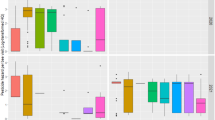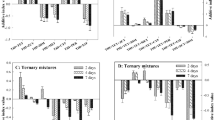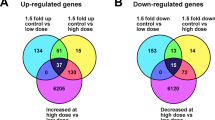Abstract
RIPPER et al.1 have shown that the organophosphorus insecticide, octamethylpyrophosphoramide (‘Schradan’), when sprayed on leaves, is absorbed and translocated to other parts of the plant. Metcalf and March2 have demonstrated the tolerance to ‘Schradan’ shown by the honey bee. Using radioactive ‘Schradan’, containing phosphorus-32, we have examined the possibility of the unchanged insecticide being present in the nectar of flowers and afterwards appearing in honey.
This is a preview of subscription content, access via your institution
Access options
Subscribe to this journal
Receive 51 print issues and online access
$199.00 per year
only $3.90 per issue
Buy this article
- Purchase on SpringerLink
- Instant access to full article PDF
Prices may be subject to local taxes which are calculated during checkout
Similar content being viewed by others
References
Ripper, W. E., Greenslade, R. M., and Hartley, G. S., Bull. Ent. Res., 40, 481 (1950).
Metcalf, R. L., and March, R. B., J. Econ. Ent., 42, 721 (1949).
Author information
Authors and Affiliations
Rights and permissions
About this article
Cite this article
JONES, G., THOMAS, W. Contamination of Nectar with the Systemic Insecticide ‘Schradan’. Nature 171, 263 (1953). https://doi.org/10.1038/171263a0
Issue date:
DOI: https://doi.org/10.1038/171263a0



